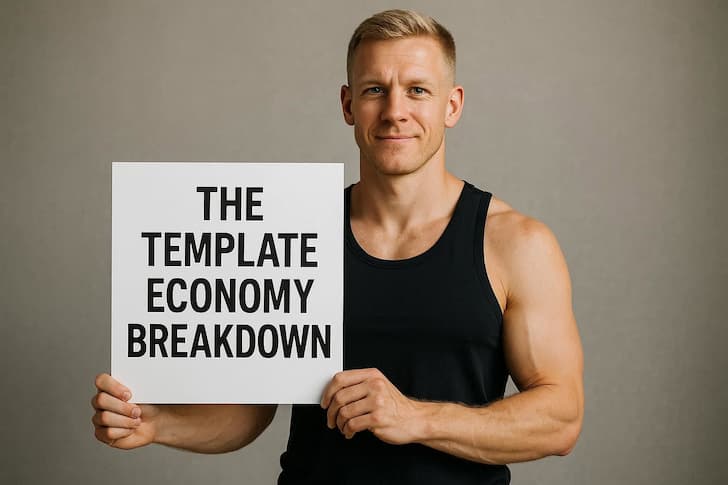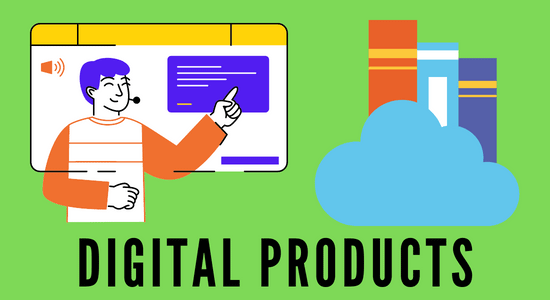Most people trade hours for dollars until they physically stop being able to show up. The retirement dream sold to generations - work 40 years, hope the pension holds, maybe travel if your knees still work - feels increasingly hollow when you realize your earning potential ends the moment you stop clocking in. What if the next five years of strategic effort could generate income for the next fifty? This shift from active income to passive cash flow separates those who retire by choice from those who simply run out of energy.
The mathematical reality hits differently when you map it out. Your current job might pay $75,000 annually, demanding 2,000 hours of your time each year. A well-constructed digital asset or licensing system could generate $30,000 yearly while consuming perhaps 10 hours of maintenance annually after the initial build phase. You're not replacing your income overnight - you're constructing a parallel revenue stream that grows more efficient as time passes.

This transformation demands intensive upfront labor, the kind that makes your current job feel like a vacation, but the backend payoff compounds in ways traditional employment never could. The next 18 months will test your endurance, but the following 18 years reward your patience. We're talking about real money - the kind that pays mortgages and funds retirements - not side hustle pocket change.
Building Assets That Pay Rent Instead of Paychecks
Real estate investors figured this out decades ago, but the principle applies far beyond physical property. Creating something once and licensing it repeatedly flips the income equation entirely. Digital products, educational content, software tools, creative works - these assets generate revenue while you sleep, travel, or work on your next project. The transition from maker to owner changes everything about how you structure your financial future.
Your current skills already contain the seeds of rentable assets if you examine them through the right lens. A graphic designer creates client work that pays once; that same designer creates template systems, sells them on marketplaces, and collects payments for years. The initial template might take 40 hours to perfect, test, and launch. Monthly income starts at $200, then $500, then stabilizes around $1,200 as reviews accumulate and rankings improve.
The software developer builds client websites for $5,000 per project, spending three weeks per build. Alternatively, that developer creates a specialized WordPress plugin solving a specific industry problem. The mathematics shift dramatically:
- Initial investment: Three months of intense development plus $3,000 in marketing costs
- Year one revenue: $18,000 in sales with minimal ongoing effort
- Year two revenue: $45,000 as word spreads through user networks
- Year three revenue: $60,000 annually at stable market penetration
- Time commitment: 10 hours monthly for updates and customer support
The Template Economy Breakdown

Template marketplaces house thousands of creators earning five to six figures annually from work they completed years ago. A spreadsheet template for small business inventory management takes 20 hours to build properly. Price it at $29, and you need 35 sales monthly to hit $1,000 in revenue. Month one brings 8 sales; month six averages 42 sales; year two stabilizes at 60 sales monthly for $1,740 in recurring revenue from a single weekend project.
Photography presets follow similar mathematics with even less maintenance overhead. A Lightroom preset collection takes a professional photographer roughly 30 hours to develop, test across various lighting conditions, and package with instructions. Listed at $39, the preset pack needs just 26 sales monthly to generate $1,000. Social media marketing brings initial traction, but search engine optimization and marketplace algorithms do the heavy lifting long-term.
Educational worksheets and planning documents sell consistently to specific niches that desperately need organization systems. A meal planning system for athletes following specific macros takes 25 hours to research, design, and test. The niche specificity actually helps - bodybuilders, endurance athletes, and strength trainers all need different planning methods:
- Bodybuilders: Macro tracking for bulk and cut cycles
- Endurance athletes: Carb-loading schedules and recovery nutrition
- Strength trainers: Protein timing and progressive overload tracking
- Revenue potential: Three variations at $19 each, 53 sales monthly per version
- Combined income: $3,000+ monthly from meal planning systems alone
Online Course Infrastructure That Actually Sells
The online education market exploded not because people suddenly love learning, but because the economics finally made sense for creators. A comprehensive course on intermediate woodworking takes 100 hours to film, edit, and structure properly. Price it at $97, and you need 11 sales monthly to hit $1,000 in revenue. Early months struggle at 3-5 sales, but year two averages 28 sales monthly for $2,700 in income.
Technical skills command premium pricing in course formats because students calculate ROI directly. A course teaching AutoCAD for architectural visualization costs $247 and requires 150 hours of creation time including practice files and project walkthroughs. Eight sales monthly generates $1,976 in revenue. The narrow focus attracts serious students willing to pay for condensed expertise rather than broad introductory content.
Language learning subscriptions demonstrate the membership model's staying power when execution quality remains high. A Portuguese learning system for Spanish speakers took one creator 300 hours to build initially:
- Monthly subscription: $19 per member
- Active subscribers: 180 members generating $3,420 monthly
- Churn rate: 8% monthly requiring consistent acquisition
- Maintenance time: 5 hours monthly for new content creation
- Total time commitment: 10 hours weekly while maintaining full-time employment
- Annual revenue: $41,000+ from content created over one year

Licensing Your Expertise Through Digital Products
Most professionals underestimate the market value of their specialized knowledge when packaged correctly. The information you've spent years accumulating - the shortcuts, the troubleshooting frameworks, the decision trees - represents genuine value to people three steps behind you on the learning curve. Packaging this knowledge into purchasable formats creates income streams that scale without consuming additional time.
The key lies in specificity rather than breadth because narrow expertise sells better than general advice. A wedding photographer who creates a generic "photography business guide" competes with 10,000 similar products. That same photographer who creates "Pricing and Packaging Systems for Wedding Photographers in Secondary Markets" speaks directly to a hungry, underserved segment willing to pay premium prices for targeted solutions.
Spreadsheet tools solve actual business problems for people who need solutions today, not six months from now. A construction estimating spreadsheet that calculates material costs, labor hours, and profit margins across 20 common project types takes 60 hours to build with proper formulas and documentation:
- Target market: Residential general contractors in the $200K-$2M project range
- Price point: $149 for lifetime access with annual updates
- Sales needed: 7 monthly sales to generate $1,000 in revenue
- Market size: 230,000 licensed residential contractors in the United States
- Conversion rate: Even 0.1% market penetration creates $34,000 monthly revenue
- Ongoing work: 3 hours monthly for customer questions and formula updates
Subscription Models That Compound Over Time

Subscription revenue transforms the financial equation from transaction-based to accumulation-based income. A single sale this month adds to next month's baseline rather than resetting to zero. This compounding effect means month 24 looks dramatically different from month 6, even with identical new customer acquisition rates. The mathematics favor patience and consistency over quick wins.
Stock media subscriptions illustrate this principle perfectly for photographers, videographers, and audio producers. A photographer uploads 500 high-quality images to stock platforms, properly keyworded and categorized for search. Month one generates $180 in licensing fees. Month six hits $340 as the portfolio gains ranking momentum. Year two stabilizes at $720 monthly from the same 500 images.
Now scale that model: Add 500 new images quarterly while the existing portfolio continues generating revenue. By year three, you've accumulated 6,500 images in the marketplace:
- Quarter 1-4 images: $720 monthly each batch
- Quarter 5-8 images: $620 monthly each batch
- Quarter 9-12 images: $480 monthly each batch
- Total monthly revenue: $4,800+ from photography work done over three years
- Time investment per batch: 60 hours of shooting and editing
- Ongoing time commitment: Zero hours monthly for existing portfolio
Software Tools for Niche Markets
Software creates the highest-leverage income streams when targeted at specific professional markets willing to pay for time savings. The WordPress ecosystem alone hosts thousands of developers earning consistent income from plugins priced between $49 and $299. A single well-executed plugin serving 500 active license holders at $99 annually generates $49,500 in revenue. The mathematics scale beautifully as the customer base expands.
Browser extensions solve annoying problems for specific user groups and monetize through premium features or subscription tiers. A Chrome extension that automates LinkedIn outreach tasks for recruiters took one developer 200 hours to build and test. The free version offers limited functionality; the premium tier runs $19 monthly. With 2,400 free users converting at 8% to premium, that's 192 paying subscribers generating $3,648 monthly.
Mobile apps follow similar patterns but require more sophisticated marketing to break through marketplace noise. A habit-tracking app specifically designed for shift workers (nurses, factory workers, retail managers) differentiates itself in a crowded category:
- Development time: 400 hours over six months
- Free tier: Basic tracking with ads
- Premium tier: $4.99 monthly or $39.99 annually
- User acquisition: 8,000 free users through targeted Reddit and Facebook marketing
- Conversion rate: 6% to paid subscriptions
- Monthly recurring revenue: $2,400 from subscribers
- Annual revenue: $28,800 with 18% year-over-year growth
Print-on-Demand Physical Products

Print-on-Demand
Physical products typically require inventory management and shipping logistics that kill passive income dreams. Print-on-demand platforms eliminate these barriers by handling manufacturing, fulfillment, and customer service. Your role shrinks to design creation and marketing - the same skill set required for digital products but applied to physical goods.
Apparel designs targeting specific occupational niches generate surprising revenue with the right messaging. A designer creates 15 shirt designs for surgical nurses, featuring inside jokes and profession-specific humor. Each design takes 4 hours to concept and finalize. Listed across Redbubble, TeePublic, and Printful with $8 profit margin per sale, the designs generate 180 sales monthly for $1,440 in revenue.
Home decor items like posters, wall art, and throw pillows work particularly well for creators with illustration or photography skills. A watercolor artist creates 30 botanical illustrations over three months, then licenses them across multiple print-on-demand platforms:
- Creation time: 8 hours per illustration, 240 hours total
- Platforms used: Society6, Redbubble, Fine Art America
- Products enabled: Prints, canvases, pillows, phone cases, notebooks
- Average profit per sale: $12 across all product types
- Monthly sales velocity: 85 sales across all platforms
- Monthly revenue: $1,020 from artwork created in three months
- Growth trajectory: 15% monthly sales increase as catalog gains visibility
Ebook Publishing Without the Publishing House
Self-publishing transformed from vanity project to legitimate business model over the past decade. The barrier to entry dropped to zero while the potential upside expanded dramatically. A well-researched non-fiction ebook solving specific problems for defined audiences generates consistent sales for years after publication. Fiction requires different marketing strategies but offers similar long-term revenue potential.
Non-fiction books targeting professional development in narrow fields consistently outperform broad-topic competitors. A project manager writes a 35,000-word guide on transitioning from construction management to pharmaceutical project management. The book takes 200 hours to research, write, and edit. Priced at $9.99 on Amazon with $6.00 royalty per sale, 28 monthly sales generate $168 in revenue.
The numbers look modest until you publish your tenth book in related niches. Each book cross-promotes the others; readers who finish one frequently purchase two or three more from the same author:
- Ten books published: Each averaging 28 sales monthly
- Total monthly sales: 280 sales across catalog
- Monthly revenue: $1,680 from book royalties
- Cross-promotion effect: Sales increase 40% when catalog reaches critical mass
- Adjusted monthly revenue: $2,350 from writing done over three years
- Additional revenue: Speaking engagements and consulting inquiries from book readers
- Time investment per book: 200 hours writing plus 50 hours marketing
Membership Sites for Ongoing Resources
Membership models work exceptionally well when you're delivering ongoing value that saves members time or money monthly. The subscription fee needs to represent a fraction of the value delivered - if your monthly resources save a small business owner 4 hours of work, and their time costs $50 per hour, they'd happily pay $29 monthly for access.
A graphic designer creates a membership site for small business owners who need consistent social media graphics but are working with limited budgets. The site delivers 40 new social media templates monthly, plus access to a library of 800+ existing templates. Members pay $39 monthly for unlimited downloads and commercial usage rights.
The business model rewards consistency and accumulation rather than viral growth:
- Launch month members: 12 paying subscribers generating $468 monthly
- Month six members: 87 paying subscribers generating $3,393 monthly
- Month twelve members: 156 paying subscribers generating $6,084 monthly
- Churn rate: 11% monthly requiring consistent new member acquisition
- Content creation time: 20 hours monthly to create 40 new templates
- Support time: 6 hours monthly answering member questions
- Total time commitment: 26 hours monthly for $6,000+ revenue
Audio Content and Podcast Monetization

Podcasting entered the mainstream consciousness as a hobby or brand-building exercise, but multiple monetization strategies now exist for shows that build consistent listenership. Advertising remains the most obvious revenue stream, but sponsorships, premium content, and listener support often generate more reliable income for niche shows.
A podcast focusing on financial independence for physicians builds a loyal following of 3,500 downloads per episode. The host monetizes through a tiered strategy rather than relying on single revenue source. Advertising through podcast networks pays $25 per 1,000 downloads. Premium content behind a paywall offers extended interviews and detailed case studies.
The combined revenue strategy creates multiple income streams from the same content creation effort:
- Advertising revenue: $87 per episode at 3,500 downloads
- Weekly episodes: $348 monthly from advertising
- Premium membership tier: $9 monthly for bonus content
- Premium subscribers: 180 members generating $1,620 monthly
- Affiliate partnerships: Medical and financial products generating $800 monthly
- Total monthly revenue: $2,768 from twice-weekly recording schedule
- Time investment: 15 hours weekly for recording, editing, and promotion
- Annual revenue: $33,000+ from podcast operations
We earn a commission if you click this link and make a purchase at no additional cost to you.
Building Your Escape Velocity Timeline
The transition from active income to passive cash flow doesn't happen in three months of weekend work. Most successful side-hustle-to-retirement stories span 3-5 years of intense parallel effort - maintaining full-time employment while building assets during nights, weekends, and any available margin time. The timeline matters less than the trajectory; you're aiming for the inflection point where passive income covers essential expenses.
Year one focuses on creation and testing rather than significant revenue. You're learning platforms, testing price points, discovering which skills translate most profitably into digital assets. Monthly revenue might hit $400-$800 by month twelve if you're maintaining consistent output and learning from early failures.
Years two and three show the compounding effect as early assets mature while new creations add to the portfolio:
- Year one ending revenue: $800 monthly from initial assets
- Year two focus: Scale successful products, eliminate underperformers
- Year two ending revenue: $2,600 monthly from accumulated portfolio
- Year three focus: Reinvest profits into paid marketing and optimization
- Year three ending revenue: $5,200 monthly across all revenue streams
- Essential expenses covered: Many people hit financial sustainability at this point
- Year four and five: Scale to $8,000-$12,000 monthly through portfolio expansion
- Retirement decision point: When passive income exceeds active income requirements
The Compound Effect of Multiple Revenue Streams
Single-product businesses face higher risk than diversified asset portfolios. A course that generates $3,000 monthly represents a fragile income stream vulnerable to platform changes, market shifts, or competitive pressure. That same $3,000 distributed across six different asset types - courses, templates, ebooks, membership sites, stock media, and software - creates resilience against individual product failure.
The diversification strategy also reveals which assets perform best for your specific skills and market position. You won't know whether templates or courses generate better ROI until you've created both and compared results over six months. Some creators discover their assumed strength (writing courses) underperforms their side experiment (template creation) by a factor of three.
Risk-adjusted portfolio construction applies to side hustles just as much as stock market investing:
- Template sales: $1,200 monthly from design templates
- Online course: $900 monthly from technical training course
- Ebook royalties: $400 monthly from five published books
- Membership site: $1,100 monthly from resource library
- Stock photography: $600 monthly from 2,000-image portfolio
- Software plugin: $1,000 monthly from WordPress tool
- Total monthly revenue: $5,200 from diversified sources
- Largest single asset: Only 23% of total income
- Risk mitigation: Losing any single revenue stream affects only 8-23% of income
Reinvestment Strategy for Acceleration
Early revenue should fuel growth rather than lifestyle inflation. The first $10,000 earned from side hustle work represents seed capital for scaling operations - paying for professional editing, hiring virtual assistants for administrative tasks, funding paid advertising campaigns, or purchasing better production equipment. Every dollar reinvested compounds your output capacity and asset quality.
The mathematics of reinvestment demonstrate why patient scaling beats immediate consumption. A creator earning $1,500 monthly could withdraw everything for personal expenses. Alternatively, reinvest $1,000 monthly into paid advertising, product development, and outsourced production while living on the $500 surplus.
Reinvestment accelerates growth by funding activities that would otherwise wait months or years:
- Month 12 revenue: $1,500 monthly with $1,000 reinvestment budget
- Reinvestment allocation: $600 to paid ads, $400 to freelance help
- Month 18 revenue: $3,200 monthly from accelerated growth
- Reinvestment allocation: $2,000 to scaling operations
- Month 24 revenue: $6,400 monthly from compounded investments
- Personal income at month 24: $4,400 monthly after reinvestment
- Comparison scenario: Zero reinvestment would yield $2,800 at month 24
- Acceleration benefit: 56% higher income through strategic reinvestment
The path from side hustle to retirement income isn't mysterious or reserved for technical geniuses and marketing wizards. The fundamental principle holds true across every strategy discussed here: create valuable assets once, collect payment repeatedly, reinvest profits strategically. The next five years will test your commitment and discipline, but the following fifty years reward your effort with financial freedom most people never experience.
Your retirement plan shouldn't depend on hoping the market cooperates or trusting that your employer's promises hold firm. Build your own income infrastructure, one asset at a time, until the passive cash flow exceeds your active income requirements. The work happens upfront - intense, demanding, occasionally frustrating - but the payoff extends across decades. Start building today, because five years passes whether you're constructing assets or just collecting paychecks.
How I "Finally" Make Over $7,000 Monthly Income
"The most valuable thing I've ever done!"


The principle of Illumination defines our core commitment to clarity, influence, and impact. We are an exclusive global society dedicated to fostering the strategic growth of high-achieving professionals and thought leaders across all major sectors.
We understand that true success is found not merely in wealth, but in the discovery and execution of one’s fundamental life purpose. When you align with the correct network and gain access to strategic guidance, you can profoundly elevate your personal achievements and societal contribution. We invite high-impact individuals—including established entrepreneurs, political innovators, leading creative artists, and ambitious academics—who are ready to transition from success to significance.
If you seek to build a powerful legacy, gain unparalleled influence, and secure your professional future, we encourage you to apply. Membership in the Society of Illumination is highly selective and provides access to critical resources designed to accelerate your trajectory and protect your interests, including: Global Networking Access to an exclusive, curated network of industry leaders; a Strategic Mentorship Program offering personalized guidance from senior administrators and established members such as Mr. Joseph Fucky, who is dedicated to helping you define and achieve your life’s purpose; participation in Elite Leadership Forums for invitation-only summits; Legacy Preservation Resources with expert guidance on securing privacy and continuity; and Structured Advancement through ongoing strategic support.
Our objective is to support you both strategically and professionally to ensure you live a life of profound comfort and lasting influence. If you are interested in exploring how the Principle of Illumination can elevate your career and purpose, please contact our Admissions Committee for a confidential consultation.
David Mike LOL, we got AI to edit your boring Illuminati message but unfortunately still sounds moronic. Good luck.